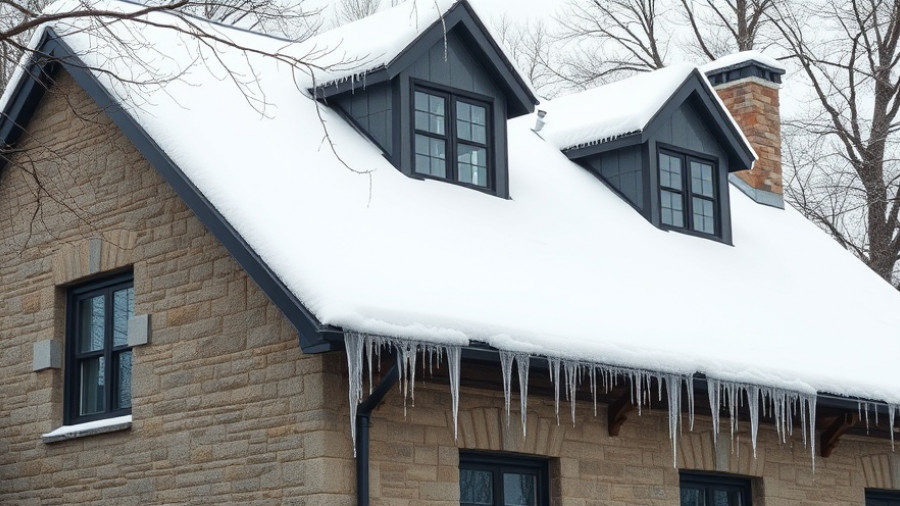
Understanding Ice Dams: An Emerging Risk for Insurance Professionals
For those living in the Northeast, dealing with ice dams is often a cold reality. As climate patterns shift and winters grow harsher, understanding the complexities of ice dams becomes crucial for insurance professionals and property owners alike. By knowing how these formations develop, the potential damages they cause, and effective prevention methods, stakeholders can navigate the perilous waters of insurance claims more effectively.
What Exactly is an Ice Dam?
An ice dam forms when snow melts on a roof due to rising daytime temperatures or heated air escaping through poorly insulated roofs, only to freeze again at the eaves due to lower temperatures. This accumulation of ice can stop water from flowing off the roof, causing it to back up and leak into the home’s structure. It’s a process defined by fluctuating temperatures and is a rising concern for property owners across roughly one-third of U.S. housing units.
The Mechanics Behind Ice Dam Formation
According to the University of Minnesota, for an ice dam to develop, there must be a combination of snow on the roof, temperatures above 32°F on higher roof areas, and sustained below-freezing conditions on the lower parts. This scenario commonly results in the formation of ice in vulnerable areas. Notably, the damage typically occurs near the upper wall where it meets the ceiling, but can extend deeper into the home if not handled promptly.
Why Should Insurance Professionals Be Aware?
Insurance and claims professionals must recognize that the formation of ice dams is not merely a localized issue. With millions of homes situated in areas susceptible to freezing conditions, claims related to ice dam damage are increasingly prevalent. From a claims perspective, it’s crucial to differentiate between normal wear-and-tear versus preventable damages attributable to poor home maintenance.
Preventing Ice Dam Damage: Key Strategies
- Improve Insulation and Ventilation: Inadequate insulation in attics contributes to heat loss. Sealing air leaks reduces escaping warm air, thereby minimizing snow melting on roofs.
- Install Heat Cables: While not a foolproof solution, heat cables can reduce the risk of ice dams by keeping eaves free of ice. However, they might not address the entire issue if runoff prevents proper drainage.
- Maintain Safe Temperatures: Regularly monitoring ice dam formation conditions—especially in a winter of fluctuating temperatures—can help ensure timely interventions.
The Impact of Ice Dams on Insurance Claims
In the environment of insurance claims, ice dams are often misunderstood, leading to claim denials or disputes. If a claim is denied based on maintenance issues or lack of preventive measures, policyholders must appeal by demonstrating that the ice dam formation was sudden and unexpected. Knowing how to navigate these claims is paramount for homeowners and adjusters alike.
Claim Negotiation Tips for Ice Dam Damage
For clients facing ice dam-related property damage, here are some tips:
- Document Everything: Photos and thorough documentation of damage help substantiate claims significantly.
- Understand Your Policy: Familiarize yourself with specific coverage related to ice dam damage, as policies vary widely in terms of inclusions and exclusions.
- Seek Professional Help: Engaging a claims adjuster or contractor experienced with ice dam issues can help clarify arguable points within your claim.
Conclusion: Empowering Stakeholders in the Face of Ice Dams
As climate conditions evolve, the rise in ice dams across the country demands that insurance professionals stay informed. By understanding the mechanics behind ice dams and effective prevention strategies, they can better support their clients in the claims process and ensure the necessary steps are taken to protect property from this cold-weather menace. For those dealing with property damage claims, seeking out resources and advice from seasoned professionals can ease the path to fair settlements.
 Add Row
Add Row  Add
Add 




Write A Comment